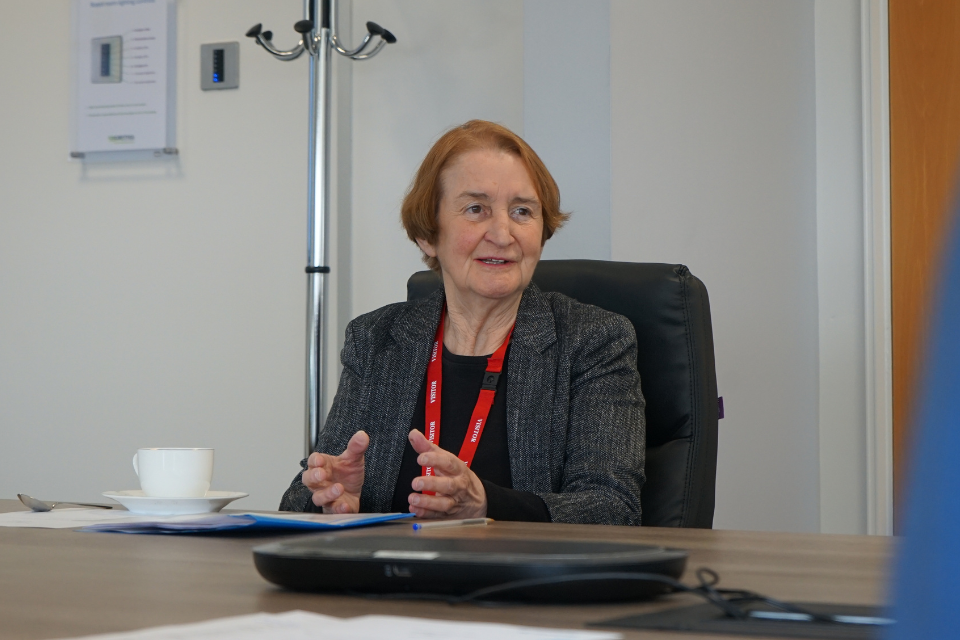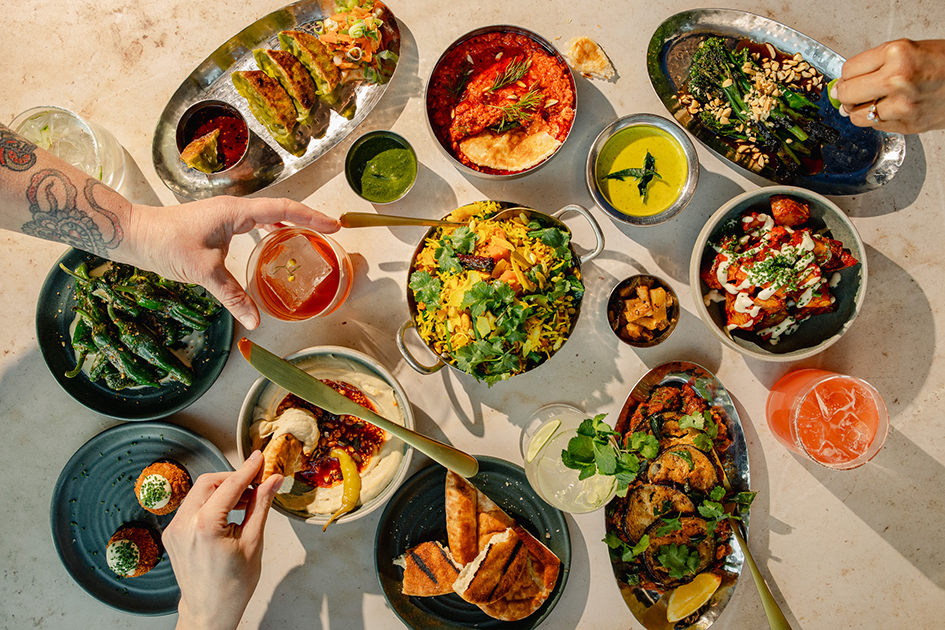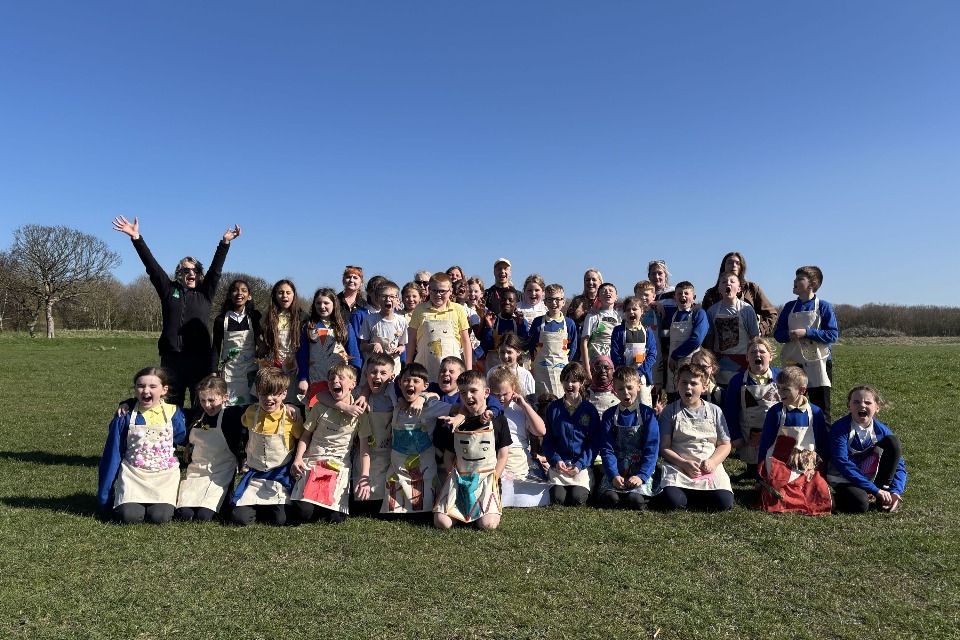This spring, a large exhibition in King’s Gallery, Buckingham Palace will deepen visitors to glamor and abundance from the Edwardian era.
Edwardians: Age of Elegance Will explore the life and taste of two of Britain’s most fashionable royal couples – King Edward VII and Queen Alexandra and King George V and Queen Mary – from their family life and personal collection to their glittering social circles, global trips and spectacular royal events.
The first Royal Collection Trust exhibition that ever explores Edwardian -ean will collect more than 300 articles – almost half on the display for the first time – including fashion, jewelry, paintings, photographs, books, sculpture and ceramics.
Visitors will see works from the Royal Collection of many of the most famous names of the period, including Carl Fabergé, Frederic Leighton, Edward Burne-Jones, Laurits Töppen, John Singer Sargent, Olive Edis, Philip de László, William Morris, Oscar Wilde and Edward Elgar.

Curator Kathryn Jones said: ‘The Edwardian era is seen as a golden age of style and glamor, which it really was, but there is so much more to discover under the surface. This was a transitional period, with Britain prepared for the brink of modern times and Europe that lined up against war. Our royal couples lived lavish, sociable, fast lives and included new trends and techniques. But in their collection, we also see a need to maintain the tradition and record the rapidly changing world around them, as in preserving a fading lifestyle. The outbreak of the First World War crushed its world, marked the end of an age and forever changed the monarchy’s face. ‘
In 1863 Queen Victoria’s oldest son Albert Edward married Princess Alexandra in Denmark, in the first royal wedding that took place at St George’s Chapel, Windsor Castle. The marriage to the fashionable young couple – the future king Edward VII and Queen Alexandra – began a glamorous new era for the royal family. With Queen Victoria still in mourning, Edward and Alexandra established their own lively court, filled with contemporary art, lavish balls and social events – a lifestyle later continued by their son, the future King George V, and his wife Queen Mary.
The two couples were known for their style, with Alexandra named by Vogue as “the legitimate fashion manager in the entire British dominance”. Visitors will see examples of Alexandra and Maria’s dazzling jewelry -including Alexandra’s Dagmar -necklace, a wedding present from the King of Denmark and Maria’s “Love Trophy” necklace, which is shown for the first time. Alongside these, paintings of magnificent court events by Laurit’s the same and portrait of today’s most fashionable society’s painters, including Philip de László and John Singer Sargent, will capture the spectacular fashion of the time.
Displays will evoke the fashionable messy interiors of the royal couple’s private homes in Marlborough House and Sandringham House, where decorative objects and family photographs covered each surface. Examples will include a Cartier Crystal Pencil case with diamonds and rubies, on the show for the first time, and more than 20 articles by Russian jewel Fabergé, including a blue enamel cigarette case with a diamond-broadcast snake that bites its own tail, which was given to EDWARD 1908 The British royal family was introduced to Fabergé by Alexandra’s sister Dagmar, wife of Russia’s Tsar, and became an avid collector.
Edward and Alexandra, and later George and Mary, surrounded by modern social characters – known as ‘Marlborough House Set’ – and their lives were full of garden parties, concerts, sporting events and costume balls. Visitors will see souvenirs and memorials from these events, including an never seen photograph of Edward in Fancy dress as a knight of the Malta order, at a ball celebrating Queen Victoria’s diamond anniversary in 1897, participated in 700 guests in historical costume.
All four figures collected works by the great contemporary artists of the period. Visitors will see highlights from their private collections, including a previously invisible study by Sleeping Beauty by Pre-Raphaelite artist Sir Edward Burne-Jones and Luminous Portraits by Frederic Leighton and Sir Lawrence Alma-Tadema-Both artistic advisors and friends to Edward and Friends. Charles Baugniet’s After The Ball, at Show for the first time in over a century, captures the elegance and abundance of the era, with a social beauty sleeping on the sofa, still dressed in her ball dress.
Passionate patron of art, Edwardians explored enthusiastically new artistic movements such as aesthetics, art Nouveau and art and crafts. This is reflected in their collections, which include a copy of Oscar Wilde’s poems, personally enrolled by the author, and an early edition of the first Book printed by William Morris’s Kelmscott Press. In 1902, Edward Orders of Merit founded contributions to cultural, scientific or military life. The recipients included Sir Edward Elgar and physicist Sir Jj Thomson, and a portrait of each one was designed for the king, a tradition that continues to this day.
The king’s family also embraced the new photograph, both as an art form and to catch the world around them. Visitors will see works by famous photographers from the era, including the groundbreaking female photographers Mary Steen and Alice Hughes – as well as photographs taken by Alexandra, with portable Kodak cameras to catch official events and family times.
Edward, Alexandra, George and Mary traveled longer than a few royal before them, collected objects, received gifts and hired tour artists and photographers, and captured their own memories. Visitors will see objects from their travels on five continents, including an Egyptian Scarab brooch given to Alexandra by Edward after his tour in the Middle East in 1863; Alexandra’s handwritten notes, watercolors and snapshots from her visit to Norway in 1893; And an embroidered hang of an eucalyptus tree, given to George and Mary by ‘The Ladies of Adelaide’ during their 1901 Australia visit.
Four years into George V’s reign, war broke out, and the glittering and glamor of the Edwardian age came to a sudden end. The Royal Family Collected Works That Recorded and Honoured The Sacrifices Made By So Many During the ‘Great War’ and Its Aftermath – Including Haunting Wartime Landscapes by Olive Edis, Britain’s First Official Female War Photography, and Frank O. Cenotaph on November 11, 1920. By the end of the conflict, A More Restrained and Dutiful Monarchy Had Emerged: A Monarchy Shaped for the 1900s.
Edwardians: Age of Elegance is at King’s Gallery, Buckingham Palace, from April 11 to November 23, 2025. www.rct.uk/edwardians







